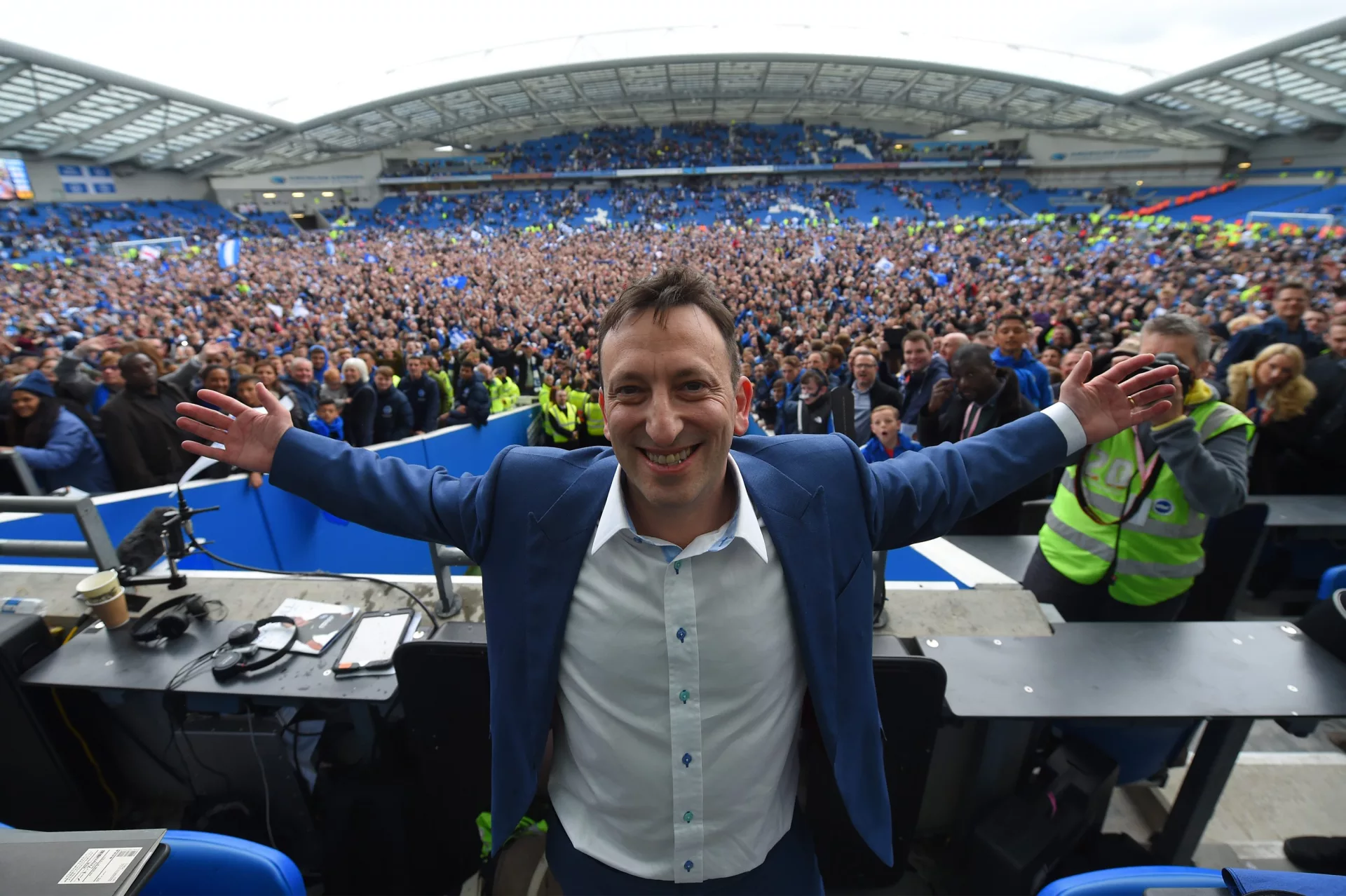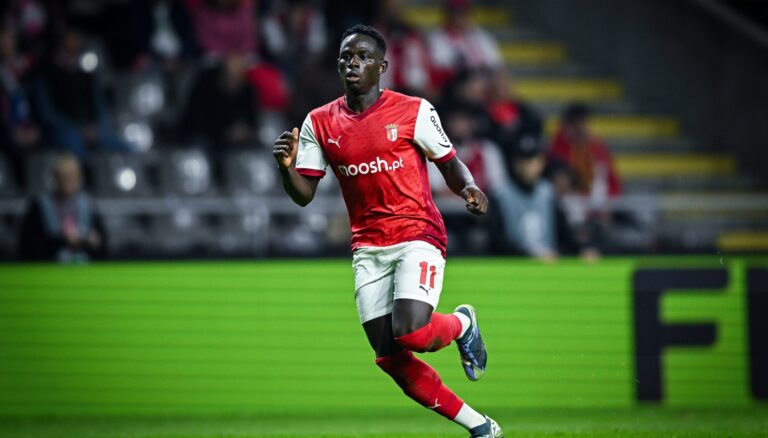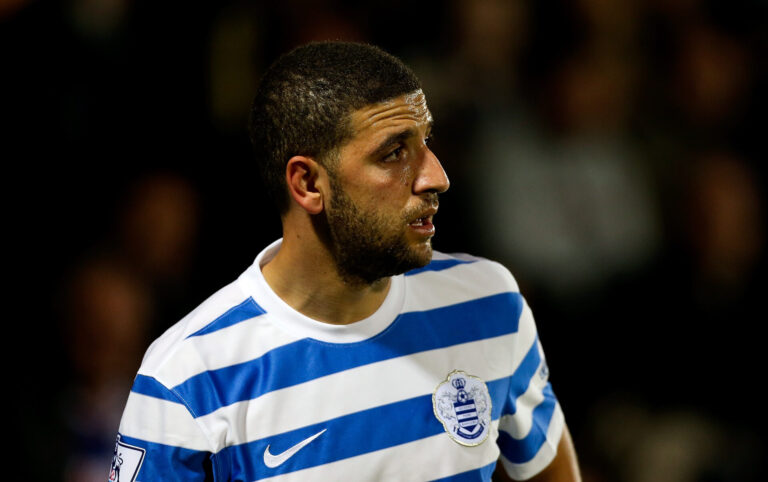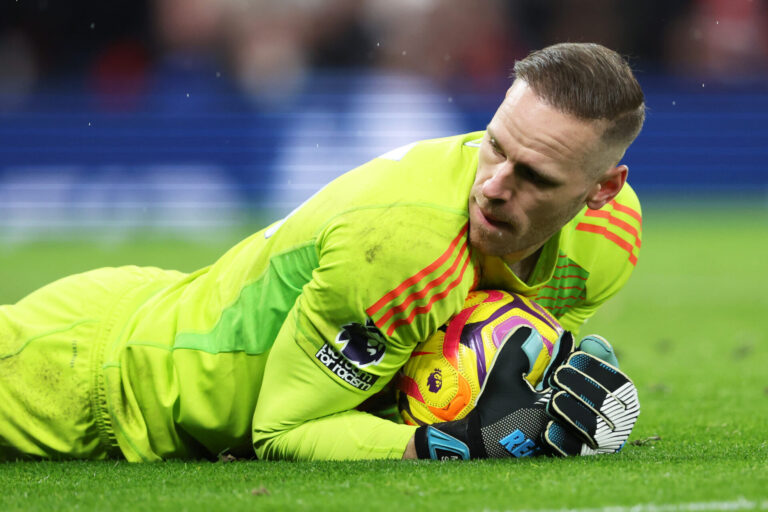The Moneyball Method: A Statistical Way Of Viewing The Beautiful Game
The Moneyball method was popularised in the world of sports by a man named Bill Beane when he decided to apply a theory made by Bill James. Beane wanted to use the theory to try and allow his baseball team, the Oakland Athletics, to punch well above their weight and fight with the big dogs in their league at that time in the sport. The moneyball method throws aside the traditional way of scouting players using the human eye and takes a more statistical view of recruitment by using certain metrics of data to pinpoint exactly what they’re good at and exactly what they’re bad at.
“We are ultimately trying to find undervalued assets and hope that the player value would continue to increase. The challenge in Oakland is that there were a lot of good decisions that cost a lot of money that we were not allowed to make.”
Bill Beane.
Beane took a lot of criticism when he first began trying to enforce the theory in the league, with a number of people taking fire at the players he decided to sell when his team was already struggling. His decision to sell these players was not because they weren’t good. Some of them were All-Star-level baseball players, but that wasn’t the point. Beane and his team decided that the best way they could begin to win games was to use data to find which player consistently got on base. This prompted the decision to sell players that were good at a number of things for big fees and sign players that were good at one thing for small fees. That one thing was getting on base.
The Oakland Athletics broke the record for the most consecutive wins in American League Baseball in 2002 (20) and also won the American League West using the method applied by Beane. He was then approached by the Boston Red Sox, owned by Liverpool’s current owners, FSG, namely John W. Henry. Beane turned down the offer and continued to try and implement the style he’d been so successful with at the Oakland A’s.
MoneyBall In Football?
The use of statistics in football helps give us a clearer and more precise view when deciding which players to recruit. The eye test and opinions are important, and they will always have a place in football no matter how far the introduction of data analysis goes, but statistics really do allow us to see exactly what a player is good at and if they’re good at it on a consistent basis.
A traditional scout could go to six games and watch a certain player, and within those six games, this player could have one of the greatest streaks in front of goal he’s ever had in his career. The scout could come back to the recruitment team and sell this player as a great finisher, suggesting they should take a chance and sign him. Data analytics, more specifically xG conversion, can help show us whether the scouts time watching the player was just an unsustainable purple patch or an actual true representation of his finishing ability.
Brentford’s MoneyBall Success:
“For David to beat Goliath, he needed to use a different weapon. If David had used the same weapon, he would have lost the battle. You’ve got to find your weapons. That’s what Brentford is about.”
Rasmus Ankersen, Former Director of Football at Brentford.
Matthew Benham took over Brentford in 2012, having been a lifelong fan of the club. That season, the Bee’s finished third in League One but failed to win the play-offs, eventually being beaten by Yeovil Town in the final. Benham had previously been very successful in the gambling scene by using data analytics to gain a deeper understanding of football, and decided to take that practice over to Brentford to try and push the club forward.
Brentford were promoted to the Premier League in 2021 for the first time in the clubs history under Thomas Frank, and have go to finish 13th in 21/22 and 9th last season.
The MoneyBall method aims to sign players that are undervalued by the traditional way of recruiting and either sell them on for profit or allow them to push the team forward to become successful. There are countless examples of Brentford making a huge profit on players, and the funny thing about it is that they still match up incredibly statistically in the Premier League today.
One of those players is Ezri Konsa, whom Brentford signed from Charlton Athletic for £2.85 million and sold to Aston Villa for £13.3 million. Konsa currently has the best tackle percentage success (90%) in the entire Premier League and has won the second most aerial duels behind Virgil Van Dijk.
Ollie Watkins is another player Brentford bought cheap and sold on for profit. The Bee’s signed Watkins for £7.2 million and sold him for £34 million—an astonishing profit. Again, in keeping with the data analysis side of moneyball, Ollie Watkins xG for his three seasons in the Premier League are almost in line, which is the exact type of pattern the method looks for.
- 23/24: xG: 14.5 Goals: 16
- 22/23: xG: 16.6 Goals: 15
- 21/22: xG: 11.8 Goals: 11
There are more examples of profit from Brentford, too. Said Benrahma was sold for £19 million to West Ham after being purchased from OGC Nice for just £1.45 million. Neal Maupay was bought for £2 million and sold for £22.2 million, a £20.2 million profit. It’s an outstanding resume of profit for players many may not have taken a chance on without Brentford doing so initially.
Benham maintains that data is a small part of the process at Brentford, but it does help. The club combines the moneyball approach with the traditional approach in a sort of merger-type recruitment policy.
One of the most important people at Brentford during this period was Rasmus Ankersen, the co-director of football. Ankersen was one of the the leaders behind the scenes during the clubs rise, and Benham has previously declared that to make the data work, you need people who are capable of making good decisions. The data being provided means nothing if you don’t have the right people at the helm to make sense of it. Without that, they’re just numbers on a spreadsheet.
“If you look at the number of players released by Premier League academies, that’s a massive number. They make mistakes, because they’re making those decisions at an age when relative age, for example, still plays a role. So, the Jamie Vardys of this world, we call the rejects. We like to go pick them up.”
Rasmus Ankersen
Again, Brentford’s focus is on young and undervalued players that are overlooked by the bigger sides, as they aim to try and bridge the gap between the top teams and the ones below by doing something different.
When looking at the last starting eleven against Arsenal, only three players are over the age of 29. The club took risks on players like Yoane Wissa, whom they signed from Lorient; Ivan Toney, who signed from Peterborough; and Vitaly Janelt, who signed from Bochum.
Wissa was signed for €10 million and has a current market value of €25 million. Toney was signed for €5.6 million and has a market value above €50 million, and lastly, Vitaly Janelt was purchased from Bochum for €600k and has a current value of €22 million. The model continues to work on a consistent basis for the Bee’s.
Liverpool’s MoneyBall Focused FSG Era
Brentford are, of course, not the only club within the Premier League that has used data to analyse signings and bring them into the club. Liverpool began to shift their model when Fenway Sports Group took over in October of 2010, and it’s a model that has made them one of the best run clubs on the planet ever since, donning them the name Net Spend FC among fans in the Premier League.
The Reds were commended for their recruitment over the period of years from when Klopp took over in 2015 up until they eventually won the league title in 2020, a year after their Champions League triumph against Tottenham Hotspur in Madrid.
There was an example of Jurgen Klopp wanting the club to sign Julian Draxler, then of Wolfsburg. The club disagreed with Klopp, suggesting Mohamed Salah was a much more suitable option for his side based on the metrics the data team at the club had analysed on the player.
Key members of Liverpool’s analytical team had been following Salah for a number of years. Many of them didn’t even feel the Egyptian had failed at Chelsea during his time at the club due to his underlying numbers, but as was often the case, that wasn’t a belief universally held in the media or in the public’s perception at the time.
“There’s this idea that Salah failed at Chelsea,”.
“I respectfully disagree.”
Ian Graham, Former Head of Research at Liverpool.
Salah has consistently overperformed his xG over the course of his career in professional football. As we’ve previously mentioned with the moneyball way of approaching recruitment, xG overperformance is sometimes a red flag, but in the case of Mohamed Salah, he’s just that good consistently.
In the years prior to signing for Liverpool, the 31-year-old scored 6 goals from an xG of 3.81 (-2.19), 14 goals from an xG of 9.38 (-4.62) and 15 goals from an xG of 13.41 (-1.59). That’s not a purple patch; it’s a consistent trend over three separate seasons in two different teams that statistically proves beyond reasonable doubt that Mohamed Salah can turn low xG chances into goals.
When comparing his xG to Draxler, the player Klopp wanted for that campaign instead, the contrast is drastic. Draxler did overperform his xG from time to time; for example, in the 15/16 season, he scored 5 goals from an xG of 4.15 (-0.84), but it was never sustained and has never reached the levels of overperformance that Mohamed Salah had reached at that stage and has continued to reach since.
To put it into context, Mo Salah has scored 187 goals with an xG of 177.16, an overperformance of 9.84. Draxler has scored 25 goals from an xG of 24.89, a commendable and consistent effort, but not close to Salah’s output on a regular and sustained basis.
There’s nothing wrong with your xG being in line; as a matter of fact, some teams that apply the moneyball method differently may have gone for Draxler instead, but Salah’s consistent overperformance of his xG was something the analytical team and the sporting director at the time, Michael Edwards, felt would push Liverpool forward to another level. It’s a prediction that came through, as is often the case with the moneyball theory.
Signings like Andy Robertson, who at the time excelled in metrics like high-intensity sprints, are examples of low-value players signed by Liverpool whose stock significantly increased during their time at the club. At his peak, the Scottish defender would likely have been worth around £75 million, but Liverpool decided to keep him due to his value being so high in their system.
There are other examples of Liverpool going for signings that looked like they fit the moneyball mantra. Takumi Minamino seemed like a strange signing at the time, but the club felt the Japanese player was undervalued per the metrics they judged him on internally. Liverpool signed him for £7.25 million and sold him a year later for £15.4 million, nearly doubling their profits. A player they felt was undervalued that they ended up getting value for.
Edwards wasn’t the only one pushing the moneyball mantra at Liverpool. The owners, FSG, are of course American and were familiar with the achievements of Billy Beane at the Oakland A’s before taking over at Anfield. As previously mentioned, John W. Henry liked it so much that he tried to hire Beane to work for the Red Sox, but the offer was, of course, rejected.
Despite this, the Red Sox decided to implement the moneyball theory into their policy at the club anyway, and they ended up winning the World Series in 2004 for the first time since 1918. Since then, the club has won a further three World Series, with all four being attributed to the moneyball way of thinking.
The first major signing of Liverpool’s moneyball era was an unsuccessful one in the shape of Andy Carroll, who the statistics indicated would score a lot of goals from crosses put into the box, but ever since then, the owners have not really looked back when it came to landing signings that made the club instantly better.
Ian Graham was also a huge part of the data-fueled revolution at Anfield. Graham worked alongside Edwards for a number of years and now runs his own data company named Ludonautics, which Edwards was also a part of before he accepted an offer from FSG to return to Liverpool in a full-time role with a job higher up in the board this month.
Graham was the head director of research during Jurgen Klopp’s reign and had to convince the German of his practices and get him to buy into his way of thinking. Graham’s statistics from Klopp’s time in the Bundesliga highlighted that, per the metrics analysed, Borussia Dortmund’s seventh-place finish in Klopp’s final season should really have been a second-place finish. All the relevant statistics suggested his team was performing at a higher level than they actually ended up finishing at.
Needless to say, Klopp was on board with Graham’s way of thinking from the get-go, and Liverpool’s statistical regeneration was born.
As per the Financial Review, Liverpool’s decision to sign the polarising Naby Keita was due to the fact that the Guinea international’s average passes put his teammates in a better position to score. This was at a rate higher than a lot of players within Europe at that time, which encouraged Liverpool to spend the money they eventually did.
Graham left Liverpool in November of 2022 and started the data analytics firm now known as Ludonautics, which has recently been contacted by Sir Jim Ratcliffe and INEOS as they look to employ a more data-centric way of running Manchester United.
Tony Bloom & Brighton:
There’s a common theme here, isn’t there? If you were asked to name the two best-run clubs in the Premier League over the last 10 years, the chances are Brighton and Liverpool would be at the top of your list.
Tony Bloom is another man driven by the beauty of what data can inform you about football, and he and his team have worked behind the scenes to transform the seaside club of Brighton & Hove Albion into a European power.
25 years ago, Brighton were nearly on the brink of being out of the football league. The club had no stadium or training ground, and there were real fears they would cease to exist during that period. Since then, Bloom has invested around £500 million. The Amex Stadium is one of the most impressive in the Premier League, and after a 6th place finish in the Premier League last season under the widely sought-after Roberto De Zerbi, the club is thriving.
Bloom, similar to Benham, is a professional gambler and has a betting company. They are data-driven, and they have contributed to the data revamp behind the scenes at Brighton. The company employs a large number of analysts, and they collect data from a huge number of football matches around the world. This helps the Brighton recruitment team when assessing players, as they have a much deeper understanding of their ability due to the metrics and statistics presented to them.
This has worked a treat for Brighton in regards to how they’ve built their teams and the profit they’ve made off signing players on the cheap and selling them on for enormous fees. Moises Caicedo was signed for £4.5 million in 2021 and bought by Chelsea for £115 million. Alexis Mac Allister was signed in 2019 from Argentinos Juniors for around £6 million and sold to Liverpool for an overall fee of around £55 million. Astonishing numbers of profits.
Brighton’s Chief Exectutive, Paul Barber, has previously said the club needs to use a data-driven model to try and compete with the bigger Premier League clubs. Brentford’s former director, Rasmus Ankersen has said something similar in the past, as doing the same thing as the clubs with the most money would not be fruitful in any way. There has to be some sort of levelling of the playing field, and Brighton and Brentford’s way of levelling that is through data.
“We have to fish in different ponds, first of all we can’t afford to fish for players in the bigger markets that the bigger clubs are in, so we look to the smaller markets for players that are younger and less developed that we can coach.
And if we’re able to make a success of that, it does give us an opportunity to sell them at a much higher value, and that profit can then be ploughed back into the club to start the cycle again.
Paul Barber.
The club has to shop in different markets than the likes of those at the top clubs in the Premier League would. When Manchester City are in the market for players like Erling Haaland, Brighton are in a different market, looking for players like Evan Ferguson. Ferguson is someone who was looked at by Chelsea prior to signing for Brighton by former chief scout Chris Robinson.
Other players Brighton have signed have been relatively unknown before breaking into the first team in the Premier League and instantly showing their class. Simon Adingra is a major example of this, with the Seagulls signing him from Danish side Nordsjaelland in 2023 for just £6 million. The Ivorian, who has just won the AFCON with Ivory Coast, has a current market value of £25.6 million.
Julio Enciso is someone Brighton scouted from Paraguayan side Libertad and paid a reasonably high fee for a player coming from that league of £9.5 million. Within two years, Enciso’s market value has already doubled to £18.7 million
In summation, the model works. Statistics in football can really help us gain an important understanding that sometimes our eyes can’t tell us on their own, but, they mean nothing without the right people looking at them and making important and educated decisions. All hail the Moneyball.









One Comment